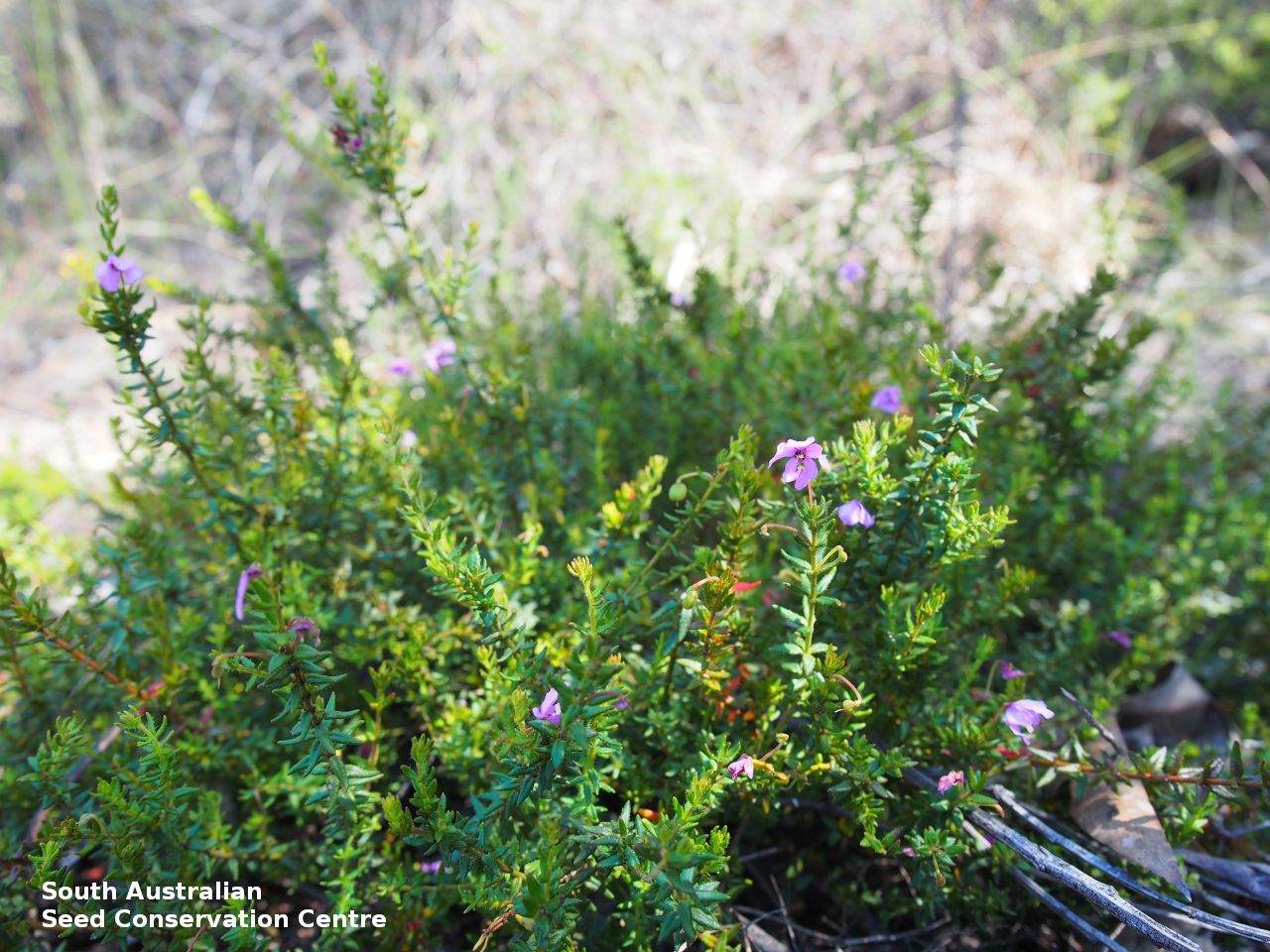
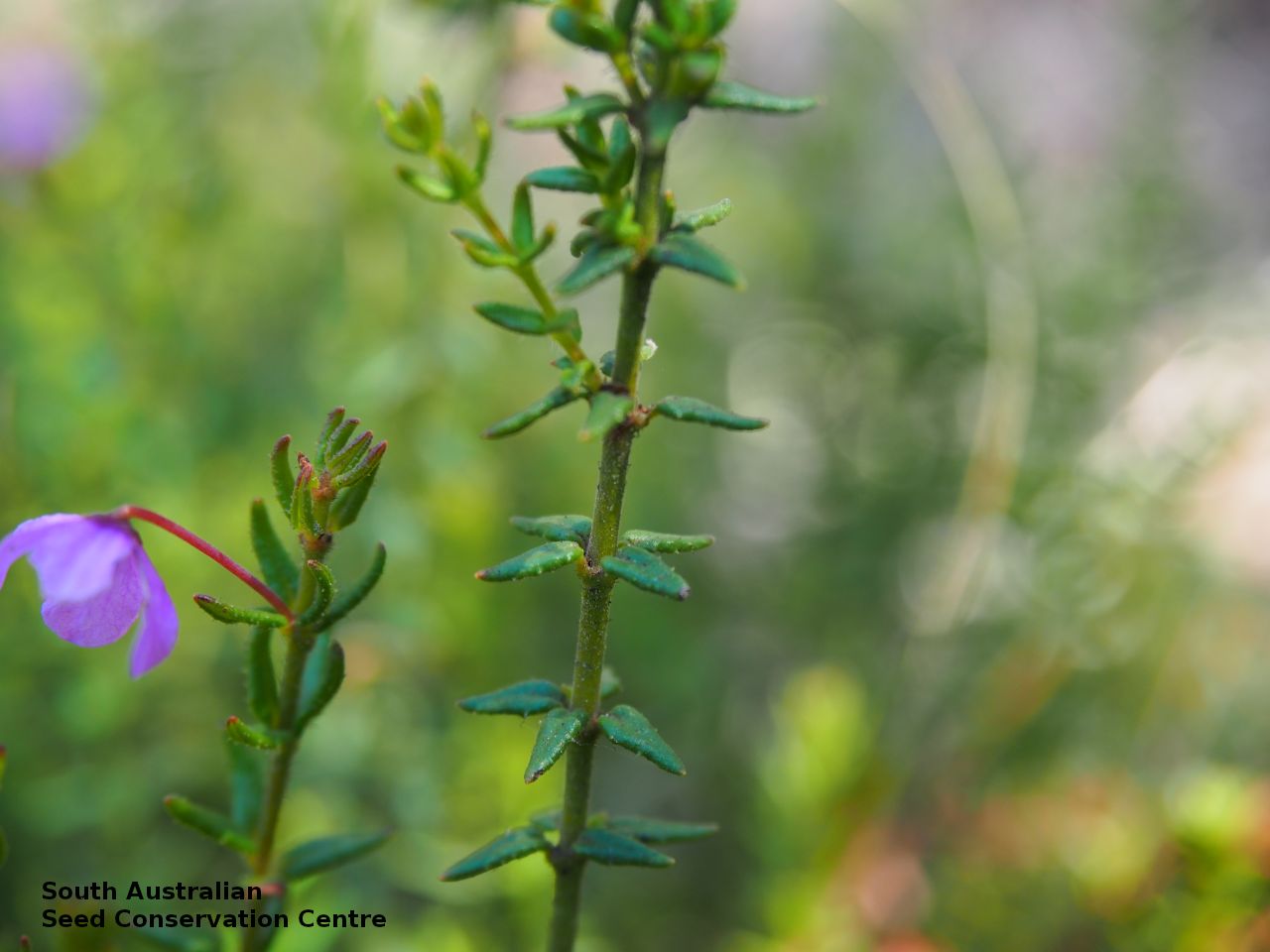
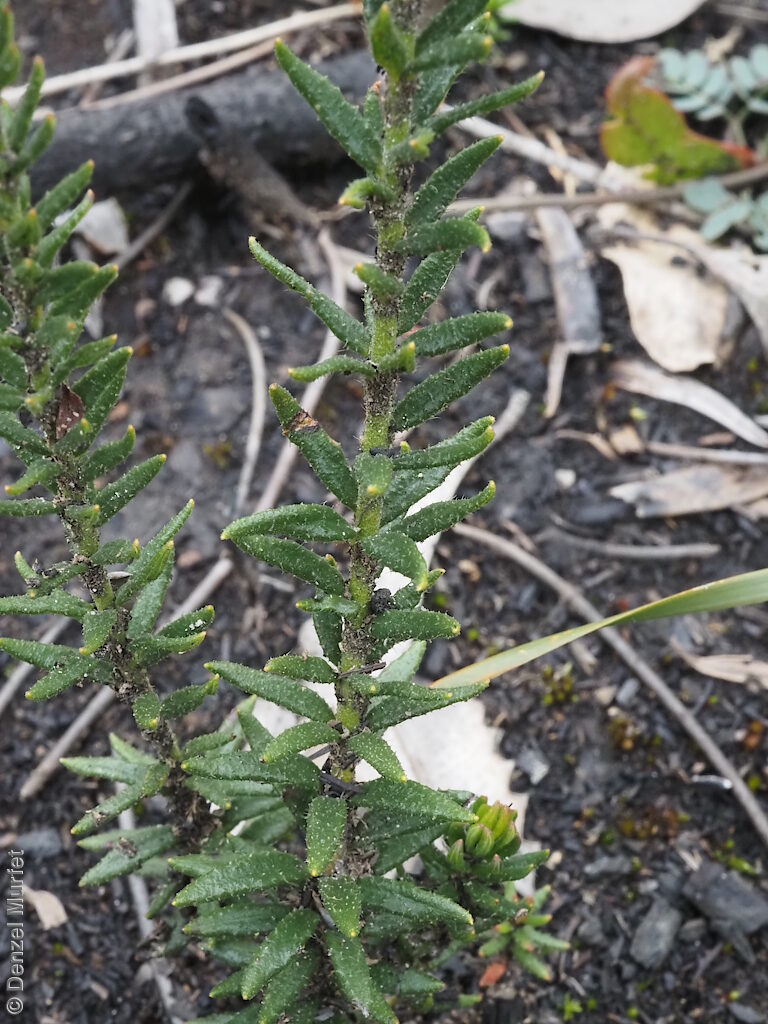
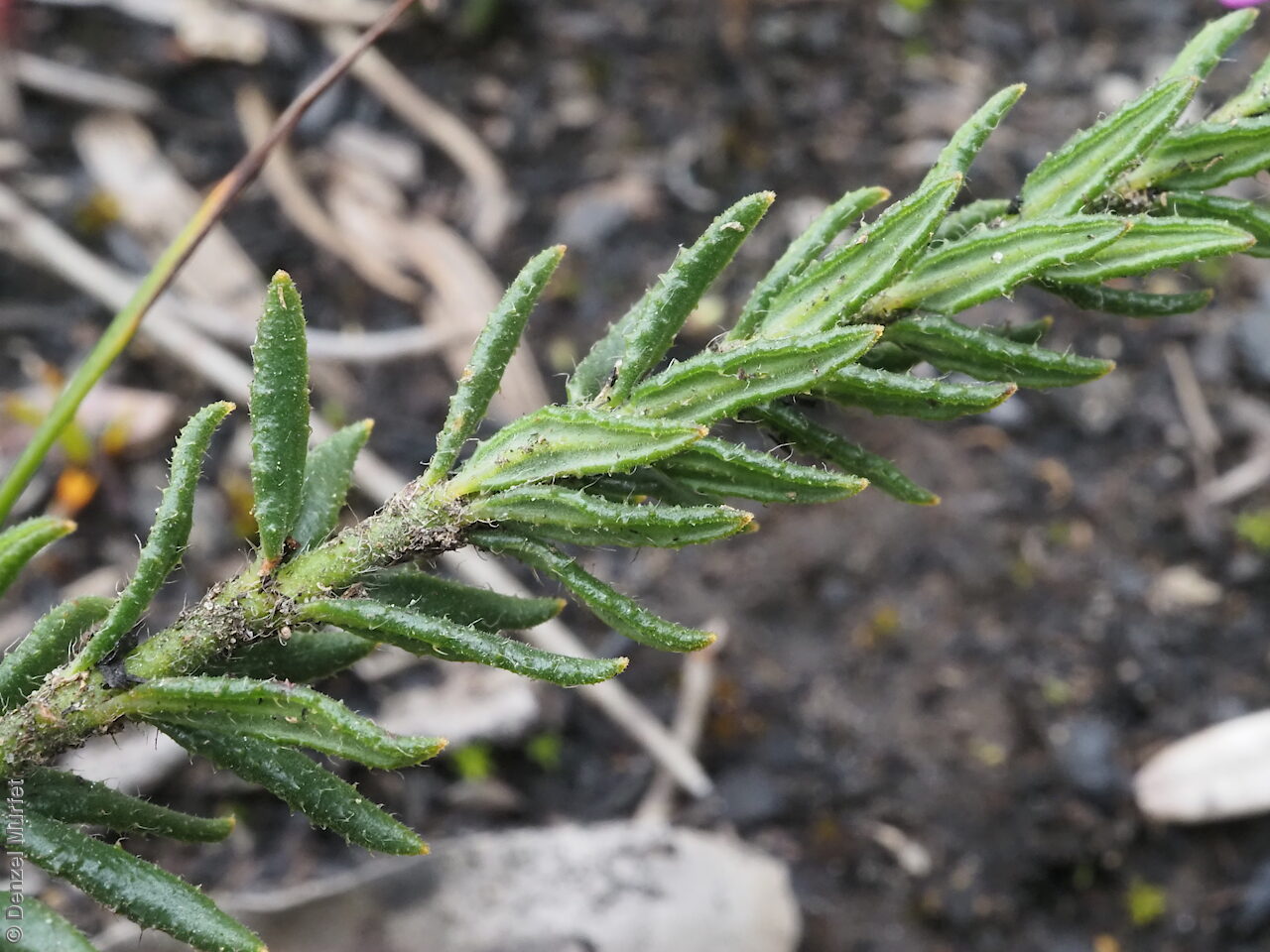
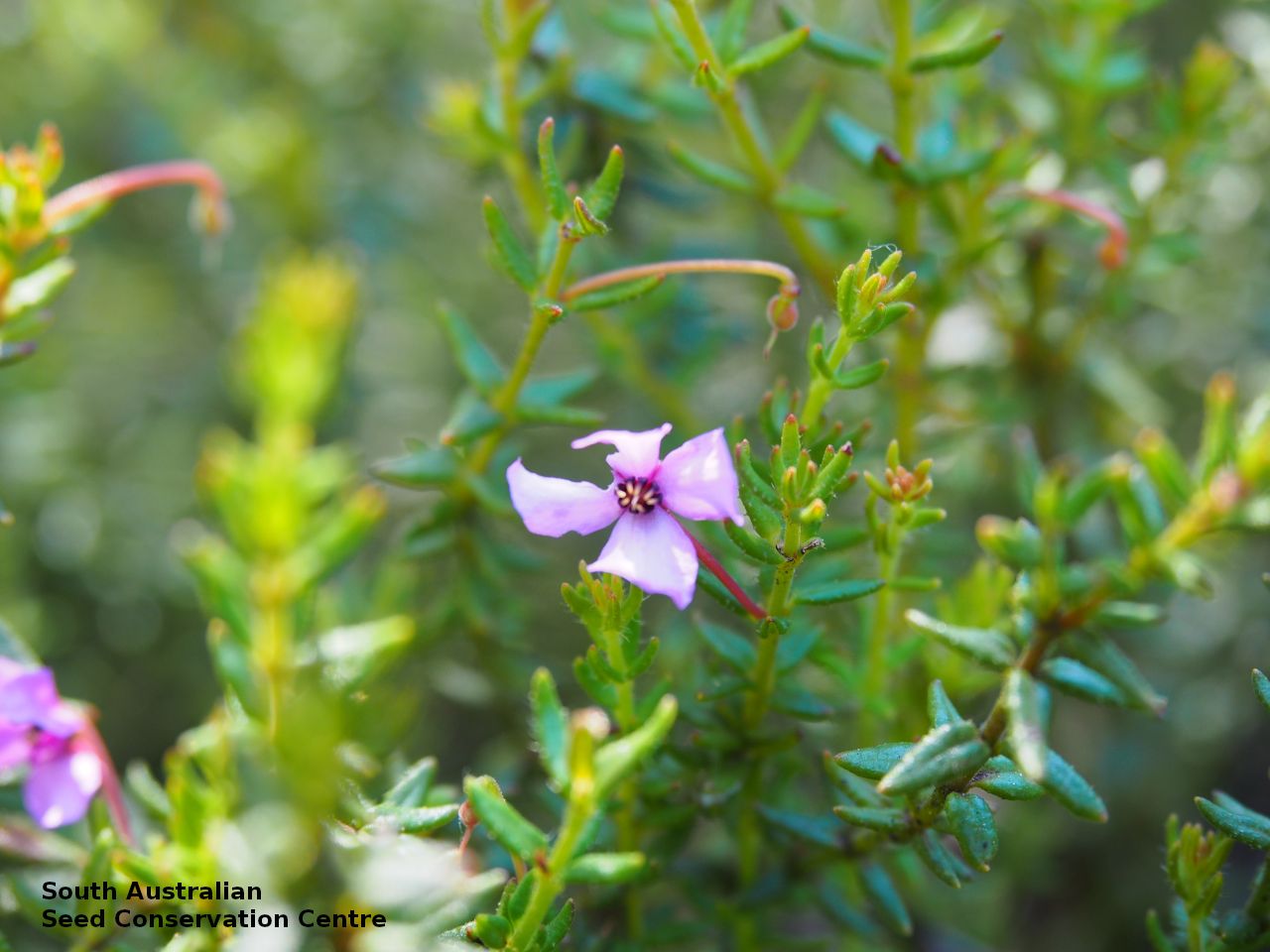
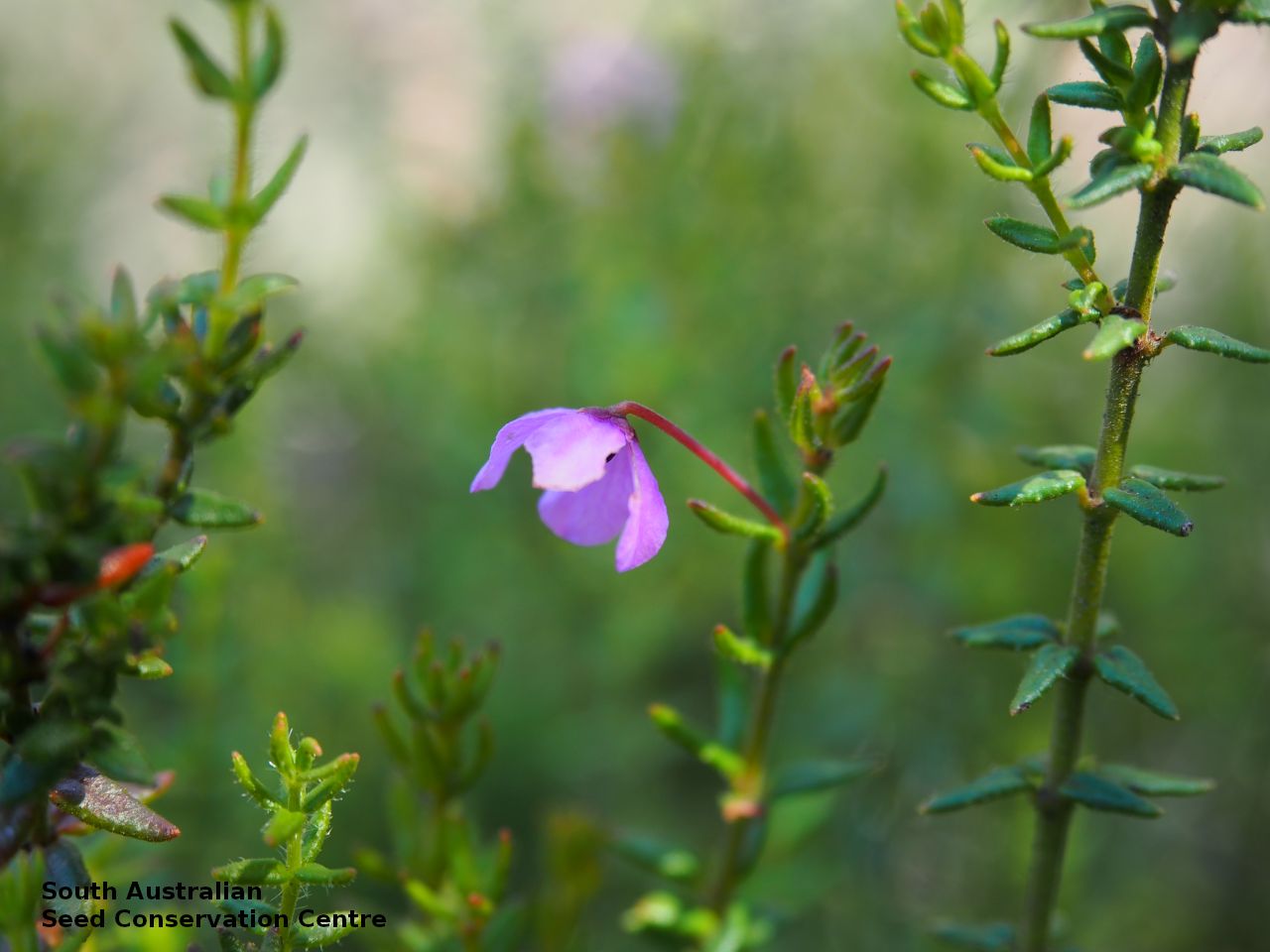
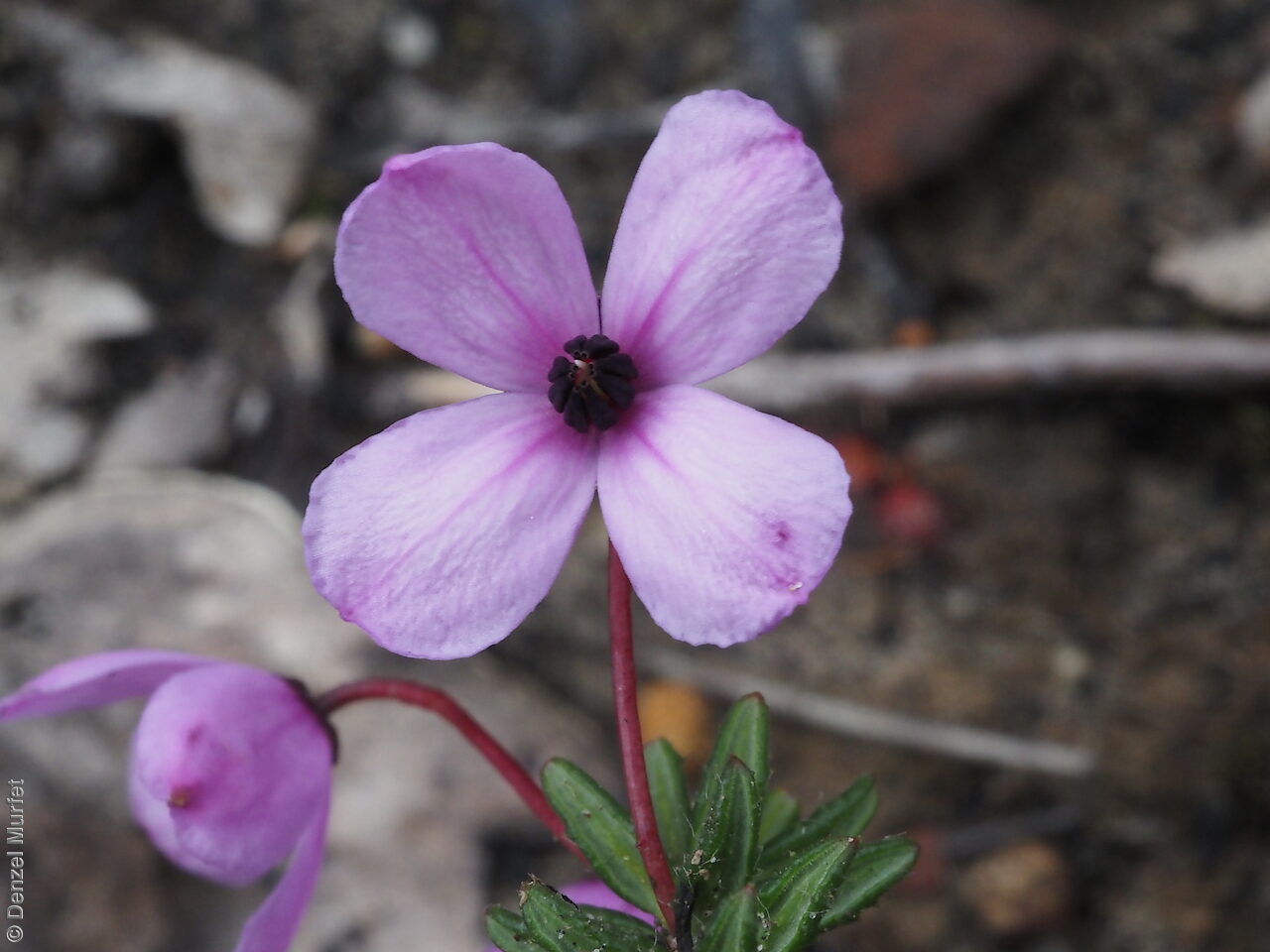
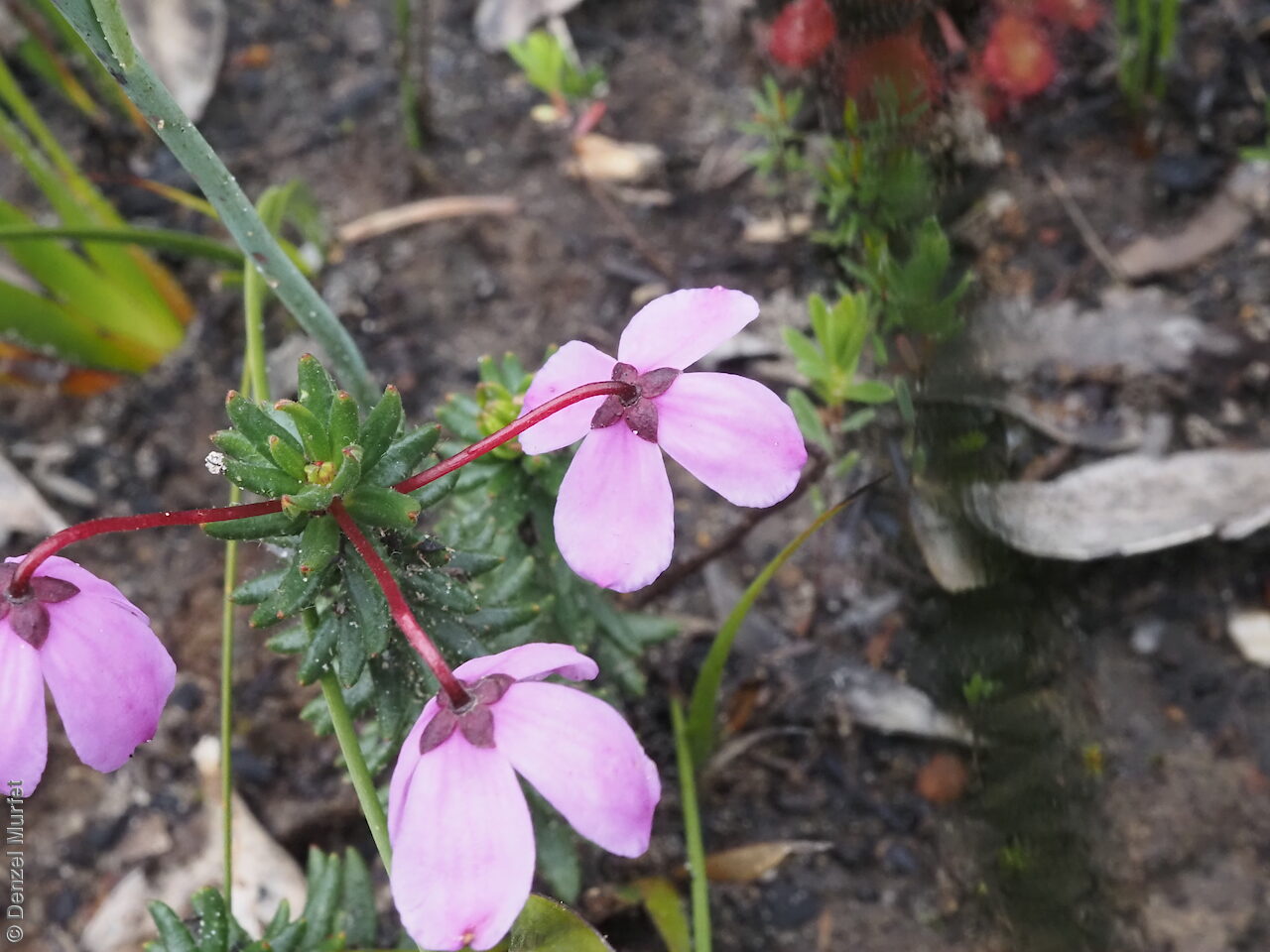
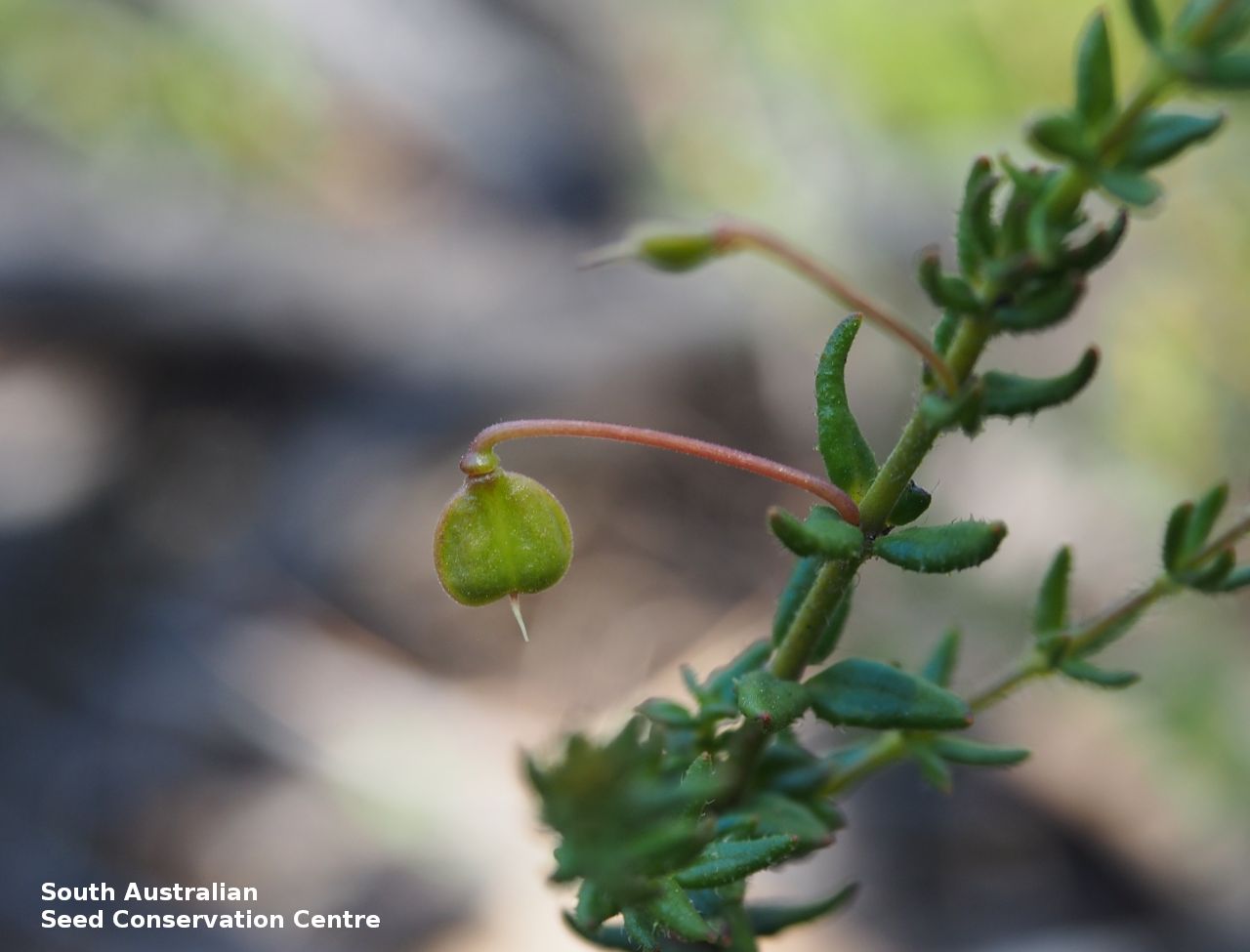
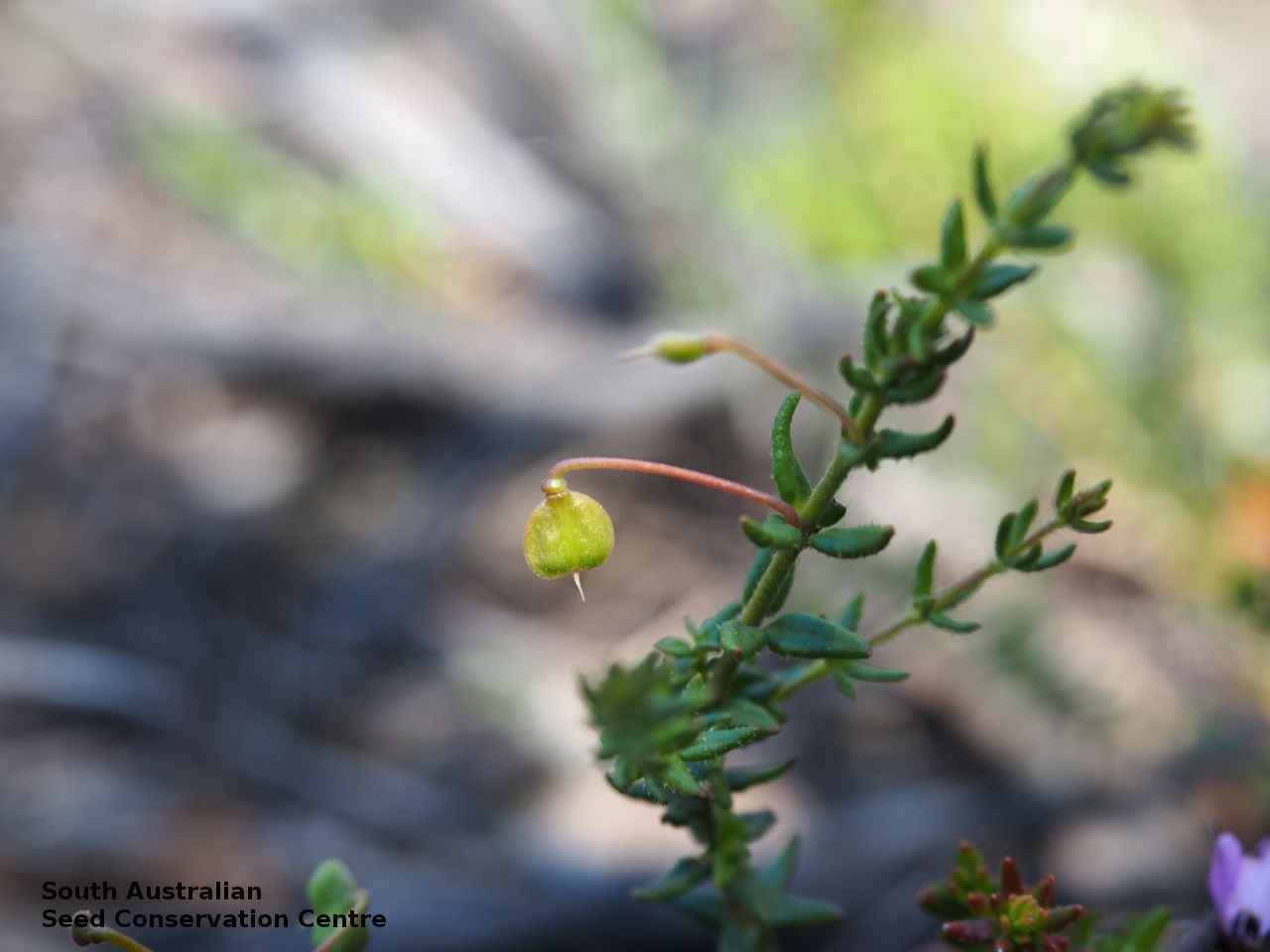
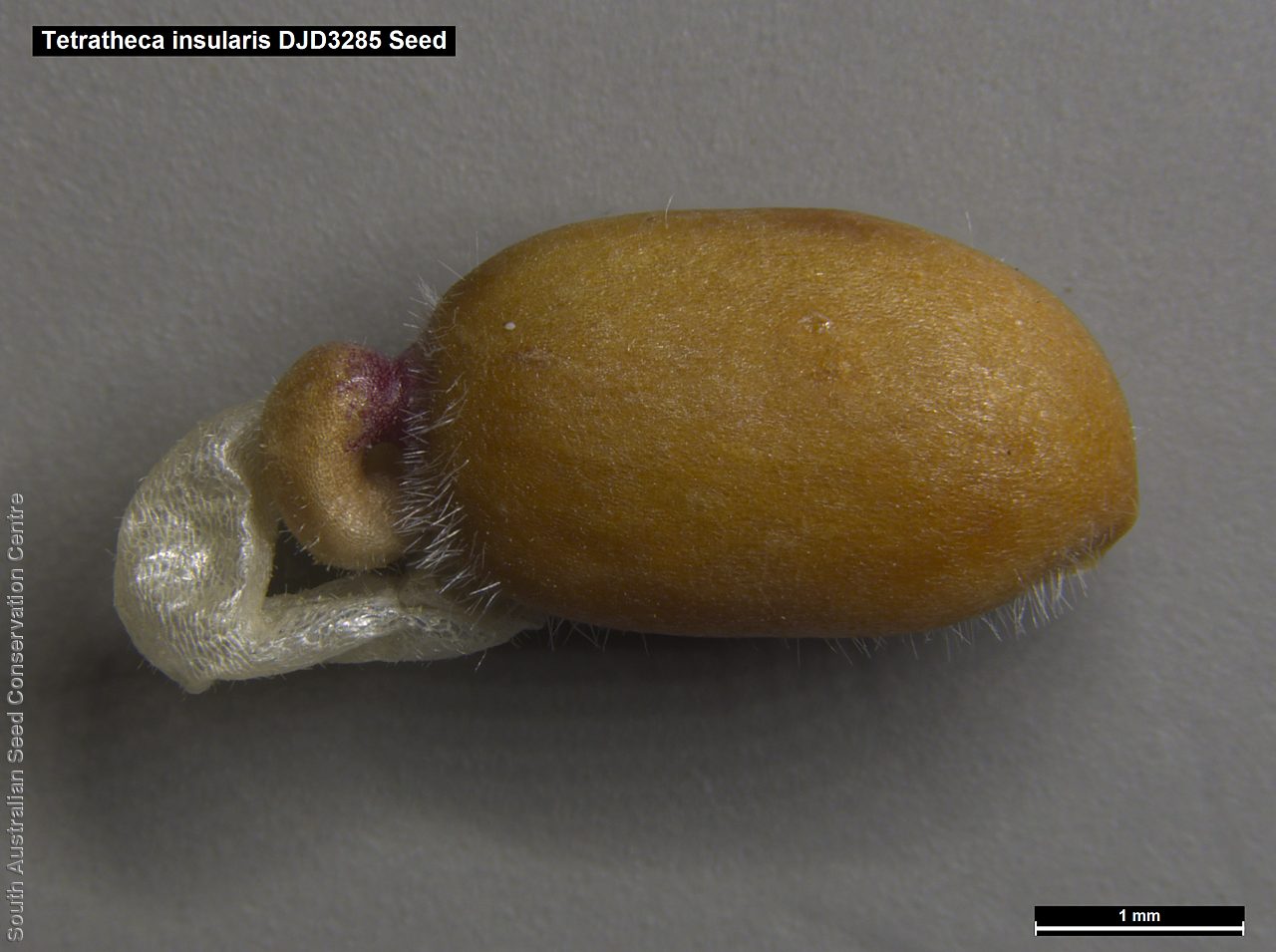
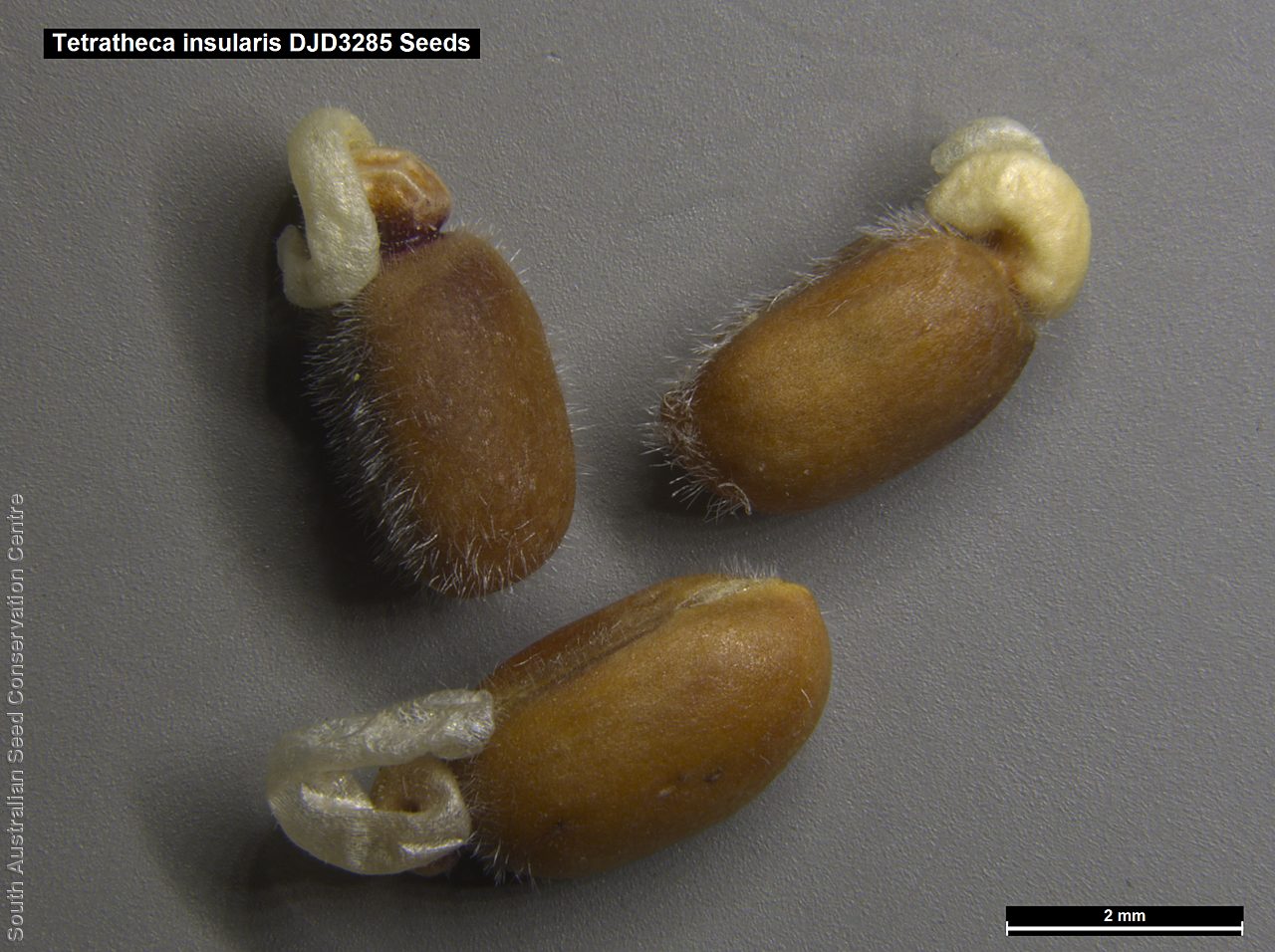

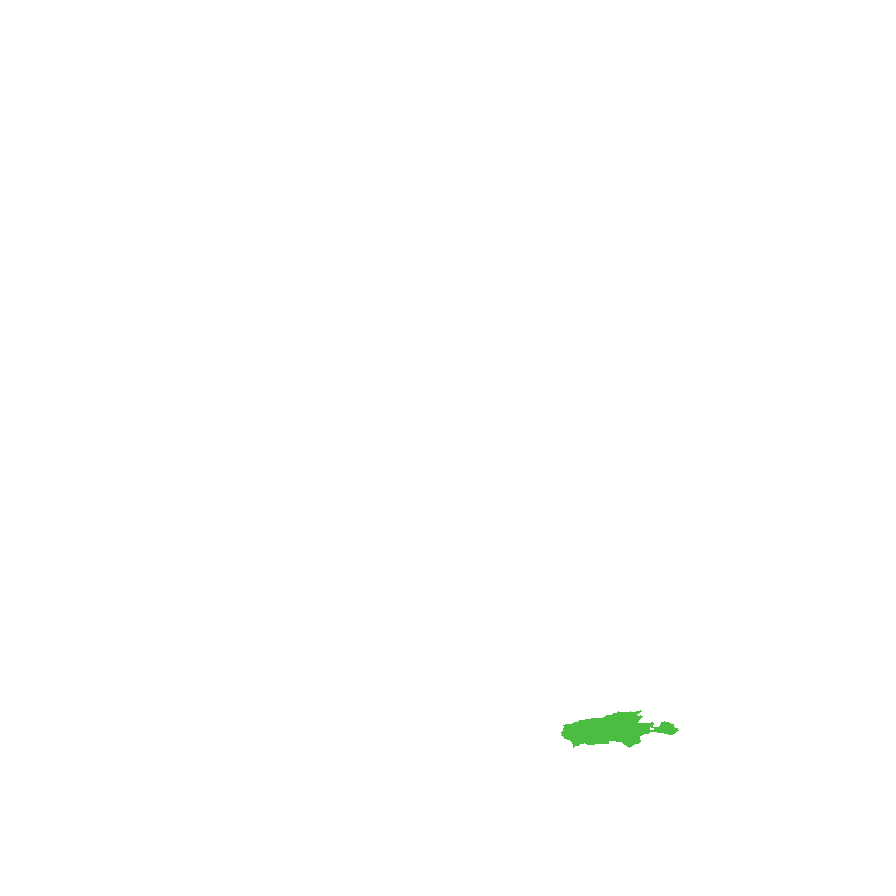
Botanical art
Prior names
Tetratheca ericifolia var. pilosa
Tetratheca ericifolia
Common names
Kangaroo Island Pink-eyes
Kangaroo Island Tetratheca
Etymology
Tetratheca from the Greek 'tetra' meaning four; and 'theke' meaning case; referring to the 4 anther-loculi, the anthers are often four-lobed or four-celled. Insularis from Latin meaning pertaining to or growing on islands; referring to the species occurring only on Kangaroo Island.
Distribution and status
Endemic to South Australia and found only on Kangaroo Island. Native. Common in South Australia.
Herbarium region: Kangaroo Island
NRM region: Kangaroo Island
AVH map: SA distribution map (external link)
Plant description
Compact shrub to 60 cm, stems branching close above a slender root stock with stems stout, covered with small white tubercles usually producing small white erect hairs. Leaves alternate, opposite or in whorls of 3-5, ovate to narrowly ovate, to 12 mm long and 1-3 mm wide, usually recurved to revolute, apex with a short stiff point tending to recurve. Inflorescences single in the axils of upper and occasionally lower leaves with dark-lilac-pink bell-shaped flowers, sepals 4, petals 4, stamens 8, body of the anther glabrous, curved, contracting into the anther tube with a narrow orifice, ovary with dense short erect hairs and small glandular hairs. Flowering between August and December. Fruits are brown ovoid capsule to 6 mm long and 4 mm wide. Seeds are yellow cylindrical seed to 3 mm long and 2 mm wide, covered in scattered hairs and with a cream appendage.
Seed collection and propagation
Collect seeds between November and January. Collect maturing capsules those that are fat, turning a pale brown and contain hard dark seeds. Place the capsules in a tray and leave to dry for a week. Then rub the dried capsules gently by hand to dislodge the seeds. Use a sieve to separate the unwanted material. Store the seeds with a desiccant such as dried silica beads or dry rice, in an air tight container in a cool and dry place.